Copper oxide ore is an important type of mineral resources. Its flotation process is challenging due to the special properties of oxidized minerals. Understanding the flotation methods of oxidized copper ore and its mixed ores is of great significance for improving copper recovery and economic benefits. This article will introduce the conventional flotation methods of copper oxide ore in detail, and explore the characteristics of non-ferrous metal oxidized ores and their influence on the flotation process.
Use the table of contents below to navigate through the guide:
01What are the characteristics of non-ferrous metal oxide ores?
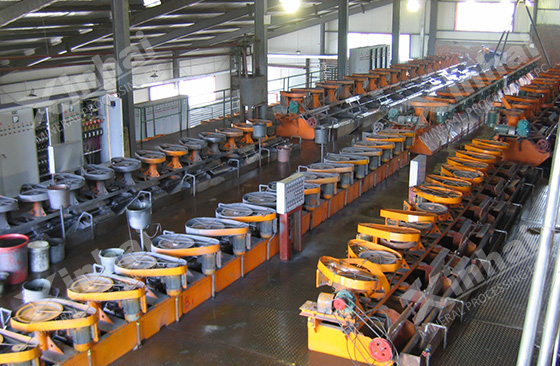
(1) The structure of non-ferrous metal oxide ores is relatively complex, the impregnation particle size is relatively fine, and the ores are brittle. Therefore, these ores are not easy to dissociate and are easy to become muddy during fine grinding.
(2) The composition of these ores is relatively complex. Multiple oxide ores of the same metal can be found in the same ore deposit, so they have the characteristics of large differences in floatability.
(3) Non-ferrous metal oxide ores often contain a large amount of ore mud and soluble salts.
(4) The properties of non-ferrous oxide ores in different ore deposits vary greatly, and the degree of oxidation and ore properties vary greatly.
It is precisely because of these characteristics that the flotation process of oxide ores is relatively difficult. Common types of copper oxide ore minerals include malachite, azurite, followed by chrysocolla and cuprite.
02Flotation of copper oxide ore and its mixed ore
The reagents with good collection performance for non-ferrous metal oxide minerals are mainly fatty acid collectors, but these reagents have the disadvantage of poor selectivity and it is not easy to improve the concentrate grade. Since only high-grade xanthate has a certain collection effect on non-ferrous metal oxide minerals, directly using xanthate to float copper oxide ore will increase production costs and is rarely used in ore dressing plants. The following will introduce you to the commonly used flotation methods of oxidized copper in ore dressing plants:
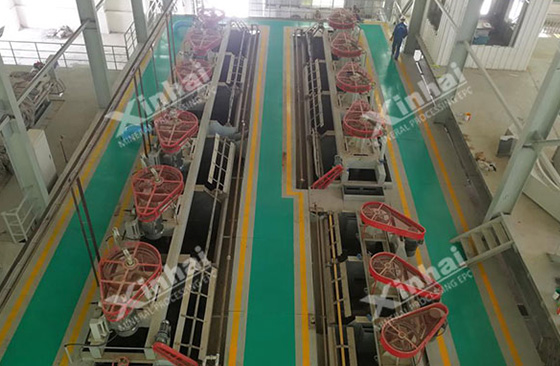
(1) Sulfide flotation: This is a relatively common and simple process. As long as the copper oxide ore can be sulfided, the sulfide flotation method can be used. The sulfided oxidized ore can be floated using xanthate. The amount of sodium sulfide should be controlled during sulfidation, mainly determined by the amount of the original ore. Sulfiding agents such as sodium sulfide need to be added to the slurry in batches and do not need to be stirred in advance. This is mainly because the sulfide film generated by sodium sulfide and other sulfiding agents after oxidation is unstable and easily falls off during strong stirring. During sulfidation, as the pH value of the slurry decreases, the sulfidation rate gradually increases.
When the sludge content in the slurry increases, dispersant water glass needs to be added for dispersion. The collector can be added with butyl xanthate or combined black medicine for collection. During flotation, the pH value of the slurry should be kept at around 9. If it is too low, lime needs to be added for adjustment.
(2) Organic acid flotation: This method can be used for flotation of malachite and azurite. When the gangue minerals are not carbonate minerals, this method can be used to treat non-ferrous metal oxide ores, otherwise the flotation will lose selectivity. When the gangue minerals contain a large amount of floatable iron and manganese minerals, the flotation selectivity will be invalidated and the flotation index will be affected. When using organic acid collectors for flotation, gangue mineral inhibitors (including sodium carbonate, water glass, phosphates) and slurry conditioners need to be added. There are also ore dressing plants that use a mixed flotation method of sulfidation and organic acid flotation. The copper sulfide and part of the copper oxide ore in the ore are first floated out by sulfidation, and then the residual copper oxide is floated out by organic acids.
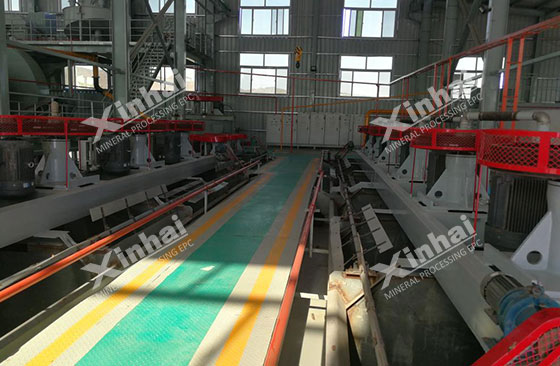
(3) Leaching-precipitation-flotation method: This method is generally used when the flotation effect of the sulfide method and the organic acid method is not good. Copper oxide ore minerals are easy to dissolve. Sulfuric acid leaches the oxide ore and replaces it with iron powder. Metallic copper can be precipitated in the precipitation, and finally the precipitated copper is floated out. This method requires grinding the mineral until the monomer is dissociated according to the embedded particle size of the mineral. Dilute sulfuric acid is used as the leaching solution, and its dosage should vary with the properties of the ore. When dealing with difficult-to-leach ores, heating methods can be used to improve the leaching efficiency. The entire flotation process is carried out in an acidic medium, and cresol black medicine or dixanthate can be used as a collector for copper ore.
(4) Ammonia leaching-sulfide precipitation-flotation method: When the ore contains a large amount of alkaline ore, the use of acid leaching will increase the consumption of reagents, thereby increasing production costs. Therefore, the ore dressing plant generally chooses to use the ammonia leaching method. After the ore is finely ground, sulfur powder is added for ammonia leaching. During the leaching process, NH3 and CO2 will react with the copper ions in the copper oxide ore. At the same time, copper ions and sulfur ions react to form new copper sulfide particles, and the evaporated ammonia is recovered, and then the copper sulfide is floated. The pH value of the slurry is in the range of 6.5-7.5. Selecting a general copper sulfide ore flotation agent can obtain good flotation indicators, but the ammonia generated in the process needs to be recovered in time to avoid environmental pollution.
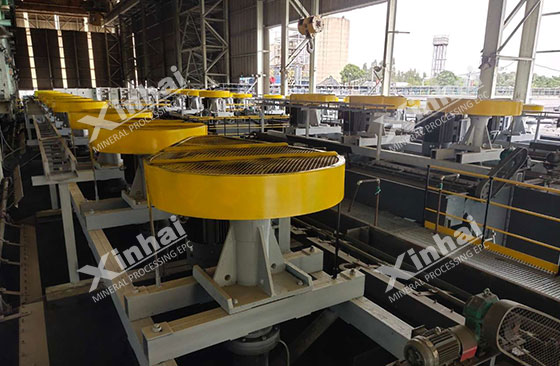
(5) Separation-flotation method: Mix ore of appropriate particle size with a certain amount of coal powder and salt, and then carry out chlorination reduction roasting at a temperature of 700-800℃. The copper chloride generated in the process evaporates from the ore and is reduced to metallic copper, which is adsorbed on the coal particles. Finally, the concentrate is obtained by flotation. This flotation method is mainly used to treat difficult-to-select oxidized copper ores and ores containing a large amount of malachite and cuprite. It is particularly effective for difficult-to-select copper oxide ore minerals with a large amount of mud.
(6) Flotation of mixed copper ore: The flotation process of this type of ore should be determined based on the mineral processing test. The flotation process can be carried out by flotating the sulfide minerals together with the sulfide minerals, or by flotating the sulfide minerals first, sulfiding the tailings, and then flotating the oxidized minerals. The process conditions for flotating oxidized copper minerals and sulfide copper minerals simultaneously are basically the same as those for flotating oxidized minerals alone, but the amount of sodium sulfide and collector should be reduced accordingly as the oxide content in the ore decreases.
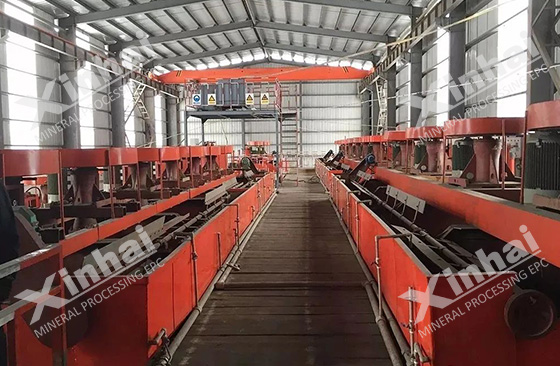
In short, there are many flotation methods for copper oxide ore, each of which has its own applicable ore type and process characteristics, and needs to be selected and optimized according to the specific ore properties and flotation indicators. By rationally selecting and combining these flotation methods, the recovery rate and concentrate grade of oxidized copper ore can be effectively improved, and the economic benefits can be maximized.


 marketing@ytxinhai.com
marketing@ytxinhai.com  0086 13810327080
0086 13810327080 






































































































 CHAT
CHAT MESSAGE
MESSAGE







